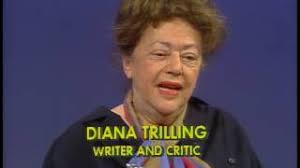20. Elizabeth Hardwick
“I wonder about the
‘morality’ of certain marks of punctuation.” – Elizabeth Hardwick
The bit of
punctuation that so troubles Elizabeth Hardwick is a pair of quotation marks,
employed to ironic effect by Henry James in his “seriously disturbing” 1898
novella In the Cage. That short work tells the story of a telegraph girl
working at a grocer’s in a fashionable London neighborhood. As she delivers and
receives juicy love notes, she eventually moves from dispassionate transmitter
of messages to involved participant, meddling in the affairs of a young couple.
James’ attitude toward his unnamed heroine is, according to Hardwick, one of
“drastic condescension,” the story’s principle interest lying in finding out just
“how painfully [James] will push on” with his contempt for his lead character.
Nowhere is this condescension so egregiously illustrated than in a particular
observation involving the telegraph girl’s relationship with her alcoholic
mother. The girl, James writes, “made up even for the most haunting of her
worries, the rage at moments of not knowing how her mother did ‘get it’.”
By putting the expression “get it”—referring to
alcohol—in quotes, James distances himself from the girl’s world, placing
himself above it all, an amused observer. More than a mere colloquial touch,
Hardwick argues, “get it,” when put in ironizing parentheses, is a
“diminishment of the possibility of pain, of real feeling,” a negation of the
girl’s humanity and that of everyone in her milieu; it thus represents a “moral
failing” on the author’s part. James’ class bias seeps through the page at
every turn, resulting in the creation of a character that is both helpless and
stupid, beneath any real claims on the reader’s sympathy while at the same time
deprived of almost anything in the way of real agency.
In the world of film, grammar (or what is metaphorically
referred to as “film grammar”) has long been seen as an ethical testing ground
as well, at least since Jean-Luc Godard’s 1959 declaration (via Luc Moullet) that
“Tracking shots are a question of morality.” Like Hardwick, Godard understands
that the smallest stylistic choices carry real weight in how the viewer/reader
approaches the subject and thus pose a question of significant responsibility
for the artist. Two years after Godard’s pronouncement, Jacques Rivette
famously pointed to a specific example of this film grammatical quandary,
proving his fellow Nouvelle Vague filmmaker/critic’s point
in the negative. Reviewing the 1960 Holocaust film, Kapò, in Cahiers du Cinéma, Rivette objected to a scene where Emmanuelle Riva’s character
commits suicide by throwing herself on a piece of electric barbwire. The
director, Gillo Pontecorvo, then tracks his camera forward to artfully reframe
the shot of the dead body, earning Rivette’s ire. “This man,” Rivette writes,
referring to Pontecorvo, “is worthy of the most profound contempt.”
The artful beautifying of atrocity, the avowed disdain
for the language and lives of the poor, both of these are unquestionable moral
failings, but it might be too much to lay all the blame on grammar. Hardwick
objects to James’ condescension throughout the entirety of the novella, so that
the offending quotation marks are simply the purest indication of its author’s
contempt, not anything like the sole flowering. Similarly, Rivette considers Kapò
a moral failure on several grounds—its comforting “realism”, its cowardly
refusal to question its own attitude toward genocidal horror—the tracking shot
just clinches the deal. When we attempt to depict people’s experiences, in
whatever form we work in, then, we must pay careful attention to each stylistic
choice, each quotation mark or comma, each tracking shot or pan. But in the end
it might not fully matter: if we’re going to transgress so unblinkingly as
James or Pontecorvo, the chances are good that our vision is rotten from the
start, our moral failings made readily apparent long before we’ve reached the fateful
moment of grammatical misconduct.



Comments
Post a Comment